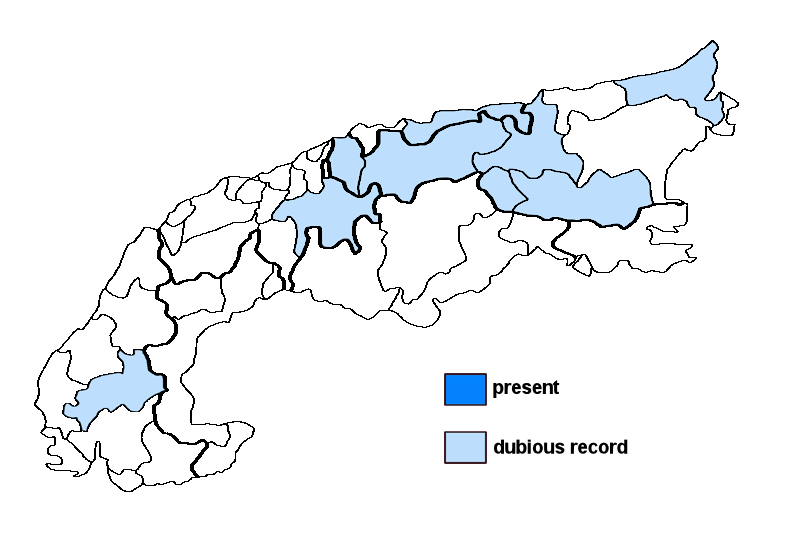Micarea assimilata (Nyl.) Coppins
Syn.: Lecidea assimilata Nyl., Lecidella assimilata (Nyl.) Arnold
Lichenised.
Substrate: plant debris, living mosses, acidic soil (mostly on siliceous substrata)
Altitudinal range: from the subalpine belt (potential vegetation: open, taiga-like forests dominated by Larix decidua and/or Pinus cembra and Rhododendron) to the alpine belt (potential vegetation: treeless Alpine grasslands and tundras, to the lower limit of perennial snow and the equilibrium line of glaciers)
Note: a frequently misidentified species resembling M. incrassata, but with a white to brownish thallus of convex to verrucose areolae, often with inconspicuous brown cephalodia inbetween the areolae, numerous, convex, immarginate, black, rather large apothecia (0.3-0.8 mm in diam.) with a green to olivaceous epihymenium and a purple-brown hypothecium, a reflexed exciple of radiating hyphae, and mainly simple, oblong-ellipsoid to fusiform ascospores (12-16 × 3-5 μm); on plant debris and bryophytes; distribution mainly arctic to boreal montane in Europe with a southern outpost in Scotland; all records from the Alps need critical re-evaluation.
Austria: ?Vorarlberg; ?Tirol; ?Salzburg; ?Kärnten; ?Niederösterreich (incl. Wien); Germany: ?Oberbayern; Switzerland: ?Graubünden; France: ?Haute-Alpes;





